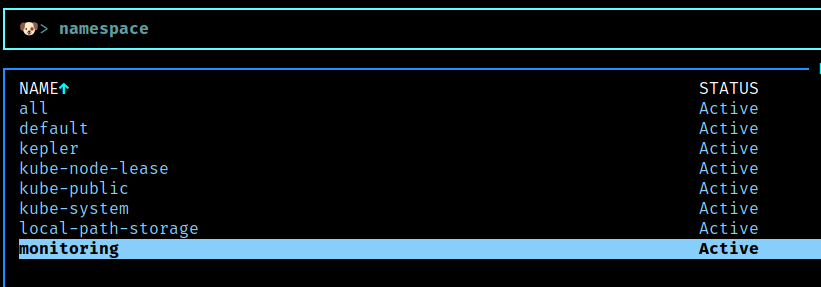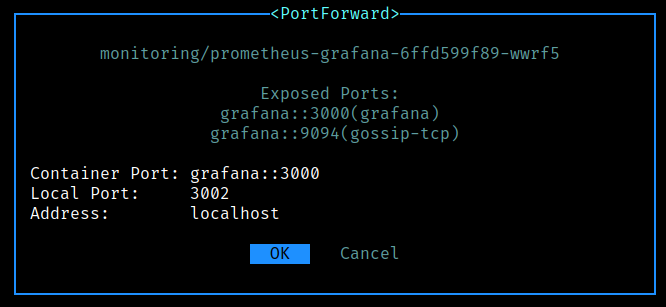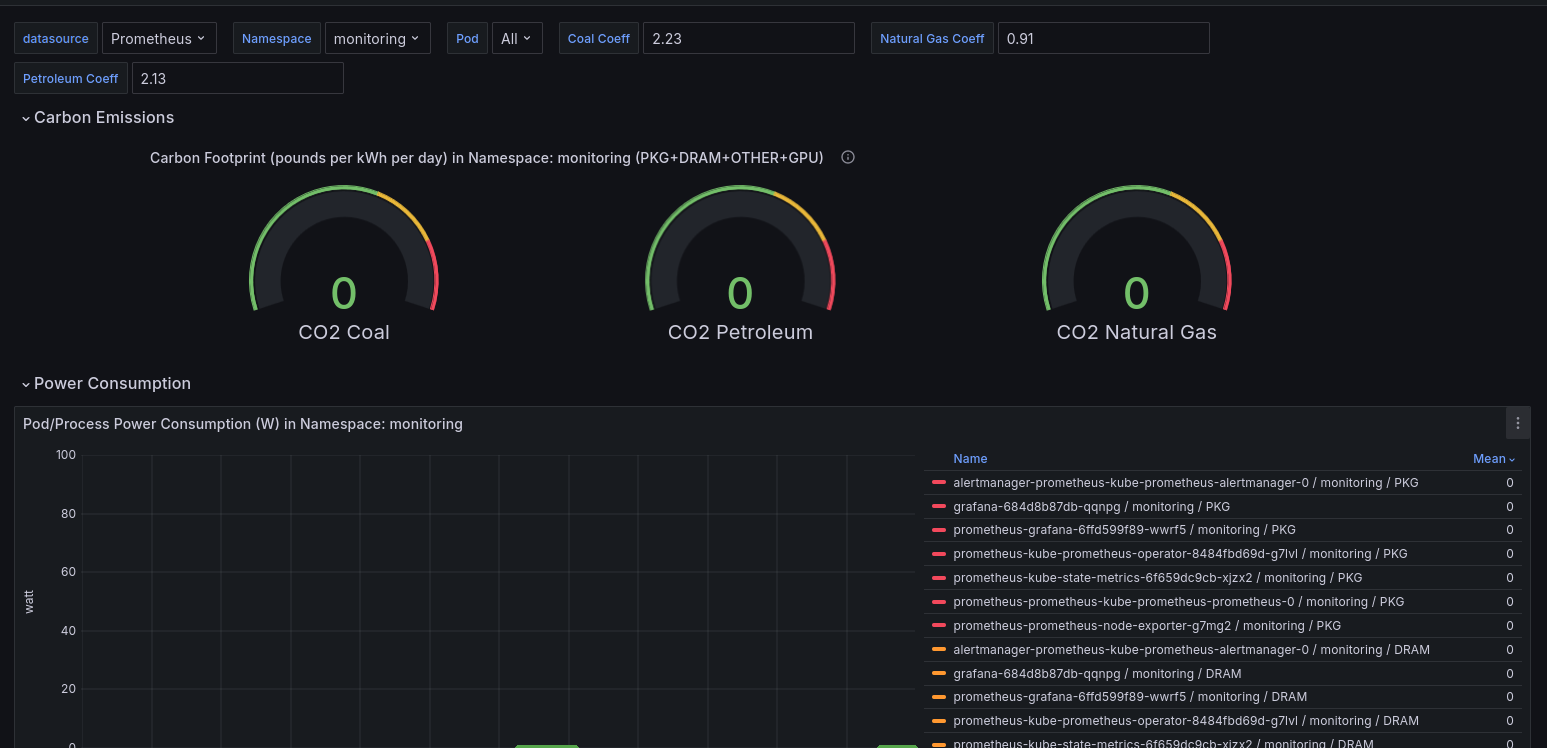awesome-go-green
Kepler (Kubernetes-based Efficient Power Level Exporter)
Kepler (Kubernetes-based Efficient Power Level Exporter) is a Prometheus exporter. It uses eBPF to probe CPU performance counters and Linux kernel tracepoints.
These data and stats from cgroup and sysfs can then be fed into ML models to estimate energy consumption by Pods.
Setting local kubernetes cluster
- Set up
Kindcluster.
kind create cluster --config=./01-setup-cluster/01-local-cluster-config.yml
- Update the context to use freshly created cluster. (kind does automatically switch context)
kubectl config use-context kind-kepler-demo-local-cluster
kubectl cluster-info --context kind-kepler-demo-local-cluster
Deploying prometheus using helm chart
- Setting up Prometheus and Grafana using
kube-prometheus-stack.
helm repo add prometheus-community https://prometheus-community.github.io/helm-charts
helm repo update
helm install prometheus prometheus-community/kube-prometheus-stack \
--namespace monitoring \
--create-namespace \
--wait
- Verify the resources.
kubectl --namespace monitoring get pods -l "release=prometheus"
#NAME READY STATUS RESTARTS AGE
#prometheus-kube-prometheus-operator-8484fbd69d-g7lvl 1/1 Running 0 4m3s
#prometheus-kube-state-metrics-6f659dc9cb-xjzx2 1/1 Running 0 4m3s
#prometheus-prometheus-node-exporter-g7mg2 1/1 Running 0 4m3s
- And, we have alert manager as well as grafana also running.
kubectl --namespace monitoring get pods
NAME READY STATUS RESTARTS AGE
alertmanager-prometheus-kube-prometheus-alertmanager-0 2/2 Running 0 14h
prometheus-grafana-6ffd599f89-wwrf5 3/3 Running 0 14h
prometheus-kube-prometheus-operator-8484fbd69d-g7lvl 1/1 Running 0 14h
prometheus-kube-state-metrics-6f659dc9cb-xjzx2 1/1 Running 0 14h
prometheus-prometheus-kube-prometheus-prometheus-0 2/2 Running 0 14h
prometheus-prometheus-node-exporter-g7mg2 1/1 Running 0 14h
- Doing port forward for grafana to access the dashboard.
It’s easier to configure using k9s. Start the utility and type namespace to list all namespaces and choose monitoring.

Choose the pod with prometheus-grafana-* and press shift-f for port forwarding.

I have used port 3002 as the port 3000 in my machine is already occupied by different service.
- Access the grafana dashboard on url: Grafana local and use the credentials: username as
adminand password asprom-operator.
Deploying kepler using helm chart
- Setting up kepler repo and installing latest version.
helm repo add kepler https://sustainable-computing-io.github.io/kepler-helm-chart
helm repo update
- Find the latest version of the kepler.
helm search repo kepler
- Make a dry run.
helm install kepler kepler/kepler --namespace kepler --create-namespace --dry-run --devel
- Deploy kepler
helm install kepler kepler/kepler \
--namespace kepler \
--create-namespace \
--set serviceMonitor.enabled=true \
--set serviceMonitor.labels.release=prometheus
- Verify the installation
KPLR_POD=$(
kubectl get pod \
-l app.kubernetes.io/name=kepler \
-o jsonpath="{.items[0].metadata.name}" \
-n kepler
)
kubectl wait --for=condition=Ready pod $KPLR_POD --timeout=-1s -n kepler
Accessing the Kepler Exporter dashboard
As there is no load and consumption, hence the load will almost equivalent to zero. Go to Dashboard and click on new and choose Import. With import option, we can add predefined JSON files from the kepler github repo. The json files also present in folder 03-grafana-dashboard.
And, then simply upload the JSON files, and access it.

How does it help?
With help of the dashboard you can monitor the resources, and can optimize the usage.
How to unistall?
- List all the deployments.
$ helm list --all-namespaces | awk '{print $1, $2}'
NAME NAMESPACE
kepler kepler
prometheus monitoring
- Uninstall the deployment.
$ helm uninstall kepler --namespace kepler
release "kepler" uninstalled
$ helm uninstall prometheus --namespace monitoring
release "prometheus" uninstalled
Thank you
Thank you for contributing towards the green development 🌍.